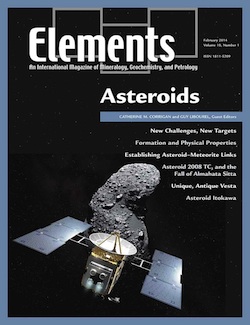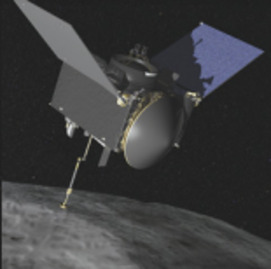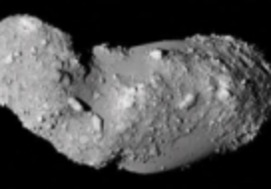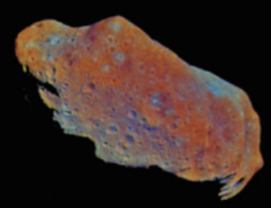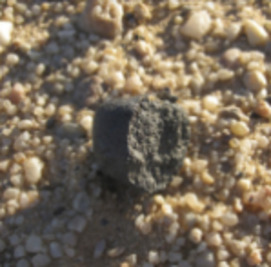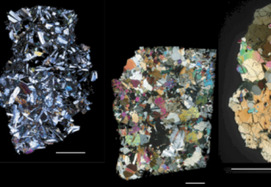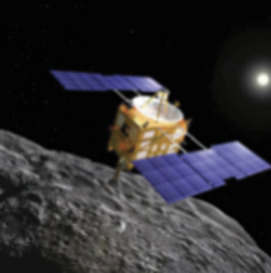
Asteroids: Linking Meteorites and Planets
Catherine M. Corrigan and Guy Libourel – Guest Editors
Table of Contents
Asteroids number in the millions. Orbiting the Sun between Mars and Jupiter, they are thought to be the shattered remnants of small bodies formed within the young Sun’s solar nebula and that never accreted large enough to become planets. By presenting several case studies, this issue will present what we know about the physical and chemical compositions of asteroids and how they are related to meteorites and planet formation. We will show why these “minor bodies” are key to understanding how the Solar System formed and how it works; why they are clues to the origin of life, having possibly delivered organics and water to Earth; and why the international space agencies have funded sample-return missions to asteroids.
- Asteroids: New Challenges, New Targets
- Formation and Physical Properties of Asteroids
- Establishing Asteroid–Meteorite Links
- Asteroid 2008 TC3 and the Fall of Almahata Sitta, a Unique Meteorite Breccia
- Unique, Antique Vesta
- Asteroid Itokawa A Source of Ordinary Chondrites and A Laboratory for Surface Processes
AHF Analysentechnik
Australian Scientific Instruments (ASI)
Bruker Nano
Cambridge University Press
Cameca
Elementa
FEI
Excalibur Mineral Corporation
Geochemist’s Workbench
Horiba
JEOL
Rigaku
Savillex
Tescan Orsay Holding
Zeiss
Thermo
v10n2 OPHIOLITES
Guest Editors: Yildirim Dilek (Miami University of Ohio) and Harald Furnes (University of Bergen, Norway)
This thematic issue will cover some of the most exciting advances in ophiolite science. Focus is directed toward ophiolite classification during the formation and destruction of ocean basins; the mineralogy, petrology, and isotope geochemistry of ophiolites; and the trace element behavior of crustal and upper-mantle units in ophiolites. The issue will cover the history of origin, the geochemical and petrological develop- ment, and the fi nal emplacement of one of the largest and most studied ophiolites, the classical Semail ophiolite in Oman. Further, for a better understanding of ophiolites in relation to subduction processes, one of the papers deals with the lithological and geochemical development of the Izu-Bonin-Mariana forearc crust as a modern analogue. Finally, the issue will present some of the new and exciting aspects of microbial interaction with the volcanic component of oceanic crust, as observed in ophiolites as old as the young Earth.
- Ophiolites and Their Origins Yildirim Dilek (Miami University) and Harald Furnes (University of Bergen)
- Immobile Element Fingerprinting of Ophiolites Julian A. Pearce (Cardiff University)
- Records of Ocean Growth and Destruction in the Oman–UAE Ophiolite Kathryn M. Goodenough (British Geological Survey), Robert J. Thomas (British Geological Survey), Michael T. Styles (British Geological Survey), David I. Schofield (British Geological Survey), and Christopher J. MacLeod (Cardiff University)
- Izu-Bonin-Mariana Forearc Crust as a Modern Ophiolite Analogue Osamu Ishizuka (Geological Survey of Japan), Kenichiro Tani (Japan Agency for Marine-Earth Science and Technology), and Mark K. Reagan (University of Iowa)
- Deep Biosphere Record of In Situ Oceanic Lithosphere and Ophiolites Hubert Staudigel (Scripps Institution of Oceanography), Harald Furnes (University of Bergen), and Mark Smits (Hasselt University)
- Diamonds in Ophiolites By Jing-Sui Yang (Chinese Academy of Sciences), Paul T. Robinson (University of Maryland), and Yildirim Dilek (Miami University)
- Asteroids: Linking Meteorites and Planets (February 2014)
- Ophiolites (April 2014)
- Kaolin (June 2014)
- Unconventional Hydrocarbons (August 2014)
- Cosmogenic Nuclides (October 2014)
- Graphitic Carbon (December 2014)
Download 2015 Thematic Preview


